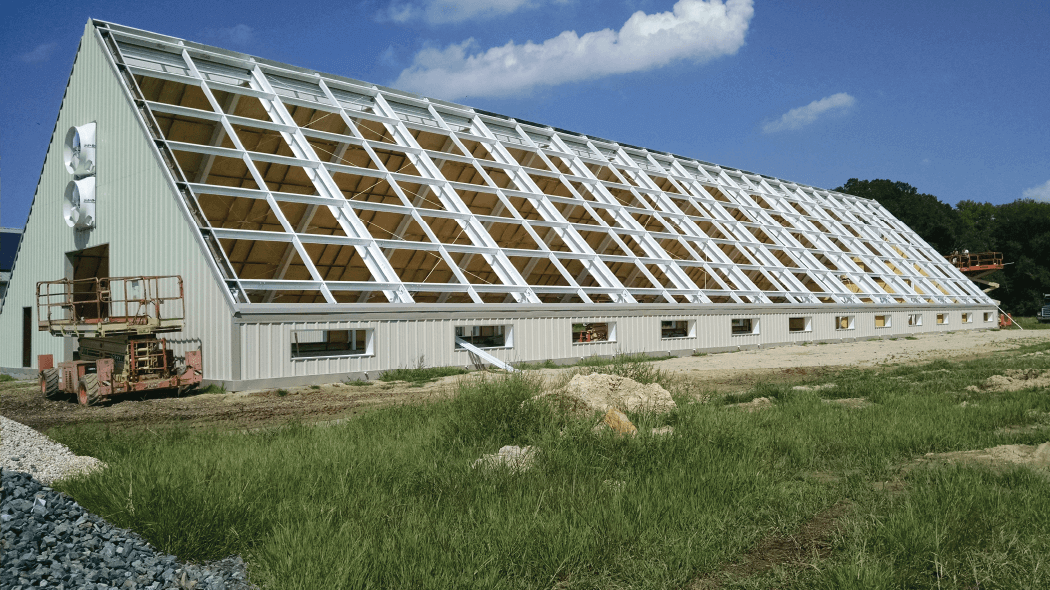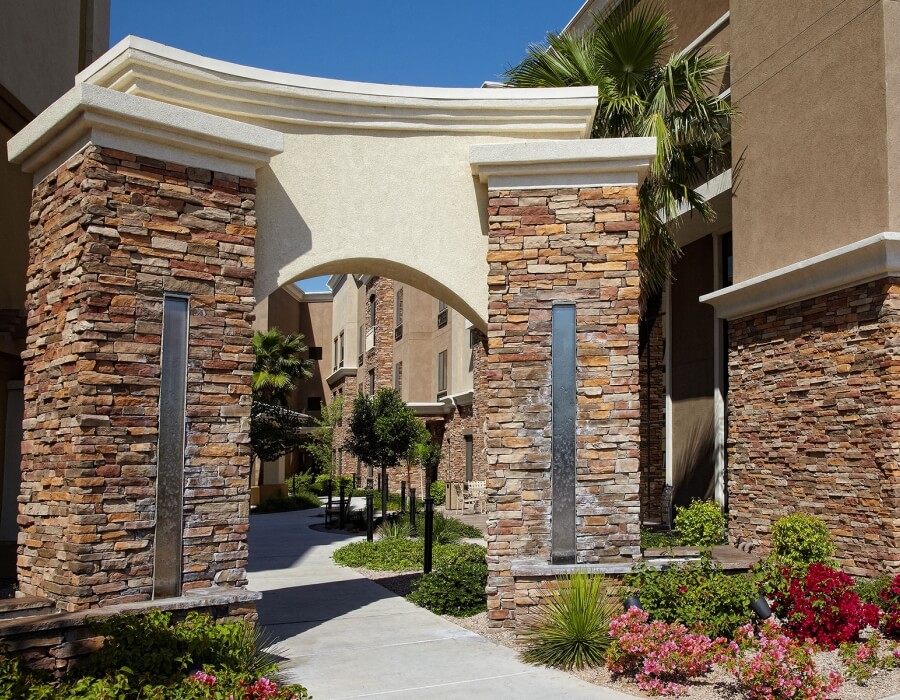
Posted on January 14, 2022 by Ceco Building Systems
The last few years have hefted remarkable unpredictability on the construction industry. From pandemic shutdowns to labor challenges and skyrocketing material prices – all amid a surge in demand that was difficult to keep pace with – 2020 and 2021 have left many of us a little frazzled. While we don’t have a crystal ball to see what 2022 might bring, we can look at the overall status of the industry and market conditions to glean some insights about what might be on the horizon.
Construction Industry Challenges in 2022
Construction Challenge 1: Labor
As the current construction workforce crosses over into retirement, we face a labor shortage that needs to be filled with qualified, hard-working young people. But filling those roles isn’t as easy as it once was.
Construction Challenge 2: Tightening Margins
The cost of construction commodities like concrete, brick, lumber and steel remains high, making it harder to maximize profit margins. GlobalData predicts a sluggish 3.2% growth rate for worldwide construction in 2022 – the slowest in a decade. Stricter regulations add to the challenge, while customer expectations remain high. We need to find new ways to make the most of our margins.
Construction Industry Trends in 2022
Despite the challenges we face, construction has always been an industry that rises to the occasion. We don’t ignore difficulties; we face them head-on. Each of these trends aims to solve or mitigate these challenges and others. At CECO, we encourage you to be aware of them all, and find ways to use them to augment your business for what’s shaping up to be a challenging – but exciting – year ahead.
Construction Trend 1: Modular Construction
When an industry faces labor shortages as well as social distancing requirements, it makes good sense to consolidate labor to as few locations as possible. Modular construction helps accomplish this. By constructing chunks of a project – or modules – off-site, more workers can remain at the same facility, working in controlled conditions. This cuts costs and reduces the construction timeline. Many builders are realizing returns – so much so that some predictions indicate the modular construction market value will reach $157 billion by 2023.
Construction Trend 2: Super-Sized 3D Printing
Another solution to the labor shortfall is 3D printing. By constructing portions of a project layer by layer, you can reduce waste, improve turnaround times and even print custom designs in large quantities without altering machinery. For instance, a team of four builders associated with the US Marine Corps used 3D printing to construct a concrete barracks building in just 40 hours – compared to the typical team of 10 taking five days to build a similar structure from wood. It may be uncommon now, but we expect to see this move more into the mainstream.
Construction Trend 3: Robotics
The most obvious and common use of robotics and robotic-type aids on the construction site is drones. According to BigRentz, drone use has increased 239% year over year. Drones allow easy high-resolution photography of the entire site, monitoring of progress, inspection of hard-to-reach places and more.
Keep an eye on other robotic solutions too, like exoskeletons that can provide 20 to 1 strength amplification, plug-and-play collaborative robots (or “cobots”), self-driving machines, and robots that can handle repetitive tasks like bricklaying or dangerous jobs like constructing scaffolding.
Construction Trend 4: Other Technological Advances
With margins slimmer than ever, squeezing as much from those margins as possible is crucial. Expect to see more technology that keeps project costs down. Artificial Intelligence (AI) provides many high-tech solutions to the daily problems of running a construction business. It can help run through countless iterations of building designs to find the best option and avoid clashes. It can use past information to predict everything from the impact of change orders to the overall month-to-month profitability of your business. Likewise, virtual reality can help clients visualize their building before it is complete. Worksite sensors can monitor worker safety or jobsite conditions and provide alerts if anything becomes unsafe.
Construction Trend 5: Used Equipment and Rentals
Many of the trends we expect to see in 2022 have their roots in the realm of technology. But the costs of committing to early adoption can be high. For one, the literal costs can be unrealistic for many companies. Another consideration is the fact that you might spend substantial amounts retooling your business with the possibility that the new technology doesn’t quite work as hoped.
Therefore, expect to see rentals as a viable alternative. These lower the barrier to entry and allow contractors and builders to see for themselves if technological innovations meet expectations. Buying used equipment is another good option, because it means getting nearly new technology at a lower price.
Construction Trend 6: Smart Project Management
For too long, project management and budgeting have hinged on paper documents, disconnected spreadsheets and knowledge occupying different stakeholder’s minds. As margins shrink, this is one area that has a lot of room for optimization. Today’s cost management software makes it possible for all of your key players – from on-site personnel and subcontractors to stakeholders and top decisionmakers to access a centralized, single source of truth. Budgets, bids, schedules, timelines, plans, cost forecasting and much more can be viewed, tweaked and visualized in real-time, anytime, from anywhere.
This kind of technology isn’t just limited to cost management. Software-as-a-service (SaaS) developers continue to find new ways to streamline the complexities of running a construction company.
Construction Trend 7: Sustainability as a Way of Doing Business
Clients request it and governmental regulations demand it more and more often. We strongly encourage you to be ahead of the ball on sustainability. Metal construction and sustainability are already a natural fit, but you can lead the way by helping your clients earn tax credits or eco-friendly designations like LEED Certification. Offering recycled or environmentally conscious products like K-Briq (90% recycled construction site and demolition waste materials) or other recycled products such as steel also give you a head start on your sustainable portfolio.
Construction Trend 8: Innovative Approaches to Recruitment
While 75% of construction firms reported that they intend to expand their workforces in 2022, we also know this will be difficult – especially filling salaried and hourly craft positions. What’s more, construction suffers from 21% employee turnover – the highest of all industries.
One answer to this is the robotic solutions already mentioned. But we believe construction has always been an inherently human business and hesitate to fill so many vacancies with technology. A better answer is to start reaching out to tomorrow’s workers while they’re still in school, being bold and proud of the kind of life a construction career provides.
Another answer is to look to the gig economy to fill short-term vacancies. This presents its own problems, but we expect to see gig economy growth in the construction industry in the coming years. Yet another solution is to be found in our final trend for 2022.
Construction Trend 9: More Women on the Worksite – and in the Head Office
Each year, more and more women discover the satisfaction of careers in construction, whether it’s as a front-line laborer or owning and running the entire operation. According to the Bureau of Labor Statistics, 2007 to 2018 saw nearly 100% growth in female-owned construction firms, and in 2018, 30% of construction firms promoted a woman to a senior position.
Though 2022 will bring its own difficulties and obstacles, we also see a lot to look forward to on the horizon, and we’re proud to move towards it with you. Get in touch with a Ceco Representative today to talk about how we can make the most out of 2022 together.
The last few years have hefted remarkable unpredictability on the construction industry. From pandemic shutdowns to labor challenges and skyrocketing material prices – all amid a surge in demand…























